 W
WOtto Ferdinand Graf von Abensperg und Traun, was an Austrian Generalfeldmarschall. The current spelling of the name, and the spelling used in his time, is mostly Abensperg.
 W
WStepan Fyodorovich Apraksin, a relative of Fyodor M. Apraksin, commanded the Russian armies during the Seven Years' War. He should not be confused with his son Stepan Stepanovich Apraksin, who had a notable military career in the service of Catherine the Great.
 W
WAugust Wilhelm, Duke of Brunswick-Bevern, Prussian soldier, son of Ernest Ferdinand, Duke of Brunswick-Lüneburg, was born in Braunschweig in 1715, and entered the Prussian army in 1731, becoming colonel of an infantry regiment in 1739. He won great distinction at the battle of Hohenfriedberg as a major-general, and was promoted lieutenant-general in 1750.
 W
WAugustus III was King of Poland and Grand Duke of Lithuania from 1733 until 1763, as well as Elector of Saxony in the Holy Roman Empire where he was known as Frederick Augustus II.
 W
WMaximilian Ulysses, Reichsgraf von Browne, Baron de Camus and Mountany was an Austrian military officer, one of the highest ranking officers serving the Hapsburg Emperor during the middle of the 18th century. An Irish refugee, he was a scion of the Wild Geese.
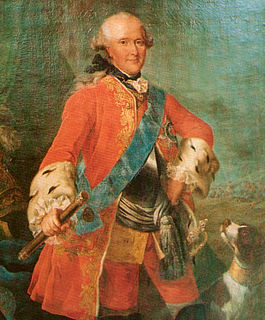 W
WFerdinand, Prince of Brunswick-Lüneburg, was a German-Prussian field marshal (1758–1766) known for his participation in the Seven Years' War. From 1757 to 1762 he led an Anglo-German army in Western Germany which successfully repelled French attempts to occupy Hanover.
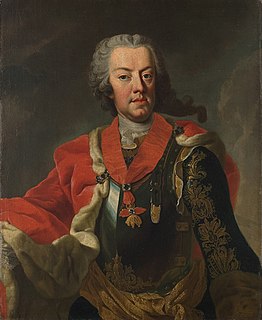 W
WPrince Charles Alexander Emanuel of Lorraine was a Lorraine-born Austrian general and soldier, field marshal of the Imperial Army, and governor of the Austrian Netherlands.
 W
WWilhelm René de l'Homme de Courbière was a Prussian field marshal who served in several wars of the 18th century and during the Napoleonic Wars. Stemming from a French Huguenot family; he notably held the fortress of Graudenz against Napoleon's troops throughout 1807, long past the Peace of Tilsit, until the siege was finally lifted after 11 months.
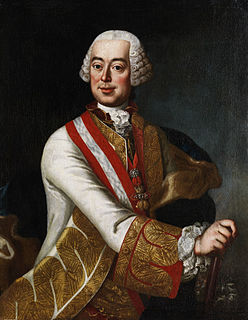 W
WCount Leopold Joseph von Daun, later Prince of Thiano, was an Austrian field marshal of the Imperial Army in the War of the Austrian Succession and Seven Years' War.
 W
WElizabeth Petrovna, also known as Yelisaveta or Elizaveta, reigned as the Empress of Russia from 1741 until her death in 1762. She remains one of the most popular Russian monarchs because of her decision not to execute a single person during her reign, her numerous construction projects, and her strong opposition to Prussian policies.
 W
WWilliam Fermor was an Imperial Russian Army officer best known for leading his country’s army at the Battle of Zorndorf during the Seven Years’ War. His name is sometimes styled Wilhelm Graf von Fermor.
 W
WFriedrich Wilhelm Quirin von Forcade de Biaix, baptized Quirin Frideric de Forcade, aka Friedrich Quirin von Forcade, aka Frédéric Quérin de Forcade was a Royal Prussian Lieutenant General, the second son of a Royal Prussian Lieutenant General, an early Huguenot immigrant to Brandenburg-Prussia and a descendant of the noble family of Forcade. He was one of King Frederick the Great's most active and most treasured officers. He was wounded three times and once left for dead on the battlefield. Together with his wife, he fathered 23 children.
 W
WErnst Heinrich August de la Motte Fouqué was a Prussian Lieutenant general and General der Infanterie and a confidant of King Frederick the Great. Fouqué held the title of Freiherr (baron).
 W
WFriedrich Eugen, Duke of Württemberg was the fourth son of Karl Alexander, Duke of Württemberg, and Princess Maria Augusta of Thurn and Taxis. He was born in Stuttgart. From 1795 until 1797 he was Duke of Württemberg.
 W
WFrederick II was a Prussian royal, military leader, writer, and composer who was King of Prussia from 1740 until his death in 1786. He was the longest reigning monarch of the House of Hohenzollern. His most significant accomplishments during his reign included his military successes in the Silesian wars, his reorganisation of the Prussian Army, the First Partition of Poland, and his patronage of the arts and the Enlightenment. Frederick was the last Hohenzollern monarch titled King in Prussia and declared himself King of Prussia after annexing Polish Prussia from the Polish–Lithuanian Commonwealth in 1772. Prussia greatly increased its territories and became a leading military power in Europe under his rule. He became known as Frederick the Great and was nicknamed "The Old Fritz" by the Prussian people and eventually the rest of Germany.
 W
WFrederick Michael, Count Palatine of Zweibrücken-Birkenfeld was a member of the Wittelsbach dynasty. He was the son of Christian III of Palatinate-Zweibrücken and Caroline of Nassau-Saarbrücken and a member of the House of Palatinate-Zweibrücken-Birkenfeld, a branch of the House of Wittelsbach. He was the father of the Bavarian King Maximilian I Joseph.
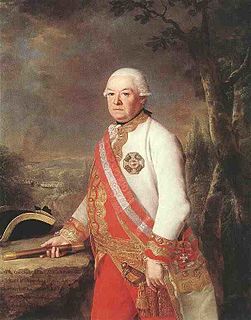 W
WCount András Hadik de Futak was a Hungarian nobleman and Field Marshal of the Habsburg Army. He was Governor of Galicia and Lodomeria from January 1774 to June 1774, and the father of Karl Joseph Hadik von Futak. He is famous for capturing the Prussian capital Berlin during the Seven Years' War.
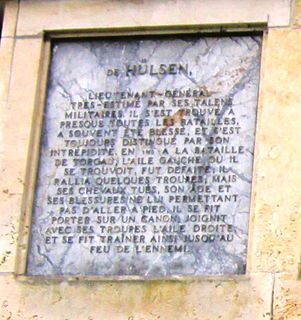 W
WJohann Dietrich von Hülsen was a Prussian lieutenant general of the infantry. After a lifelong officer's career in various infantry regiments, he acquired the special respect of Frederick II in the Seven Years' War as general, and was honored by him with the appointment as governor of Berlin. During the war, he became a canon to Minden and was awarded the Black Eagle Order and the Order Pour le Mérite. His name appears on the top tier of the Equestrian statue of Frederick the Great.
 W
WJohann Adolf II, Duke of Saxe-Weissenfels, was the last duke of Saxe-Weissenfels-Querfurt and a member of the House of Wettin. He was also a commander in the Saxon army.
 W
WJoseph Maria Frederick Wilhelm of Saxe-Hildburghausen, Duke in Saxony, was a German officer, Generalfeldmarschall of the Imperial Army and Reichsgeneralfeldmarschall (Reichsgeneralfeldzeugmeister) of the Army of the Holy Roman Empire. He is best known for commanding the Franco-Roman-German at the Battle of Rossbach, losing to the Prussian Army.
 W
WJames Francis Edward Keith was a Scottish soldier and Generalfeldmarschall of the Royal Prussian Army. As a Jacobite he took part in a failed attempt to restore the Stuart Monarchy to Britain. When this failed, he fled to Europe, living in France, and then Spain. He joined the Spanish and eventually the Russian armies and fought in the Anglo-Spanish War and the Russo-Swedish War. In the latter he participated in the conquest of Finland and became its viceroy. Subsequently, he participated in the coup d'état that put Elizabeth of Russia on the throne.
 W
WAlexander Friedrich von Knobelsdorff was a Prussian field marshal.
 W
WCount Christian Moritz von Koenigsegg und Rothfels was knight of the Teutonic Order of Altshausen. He was a nephew of Field Marshal Joseph Lothar von Königsegg.
 W
WFranz Moritz Graf von Lacy was a Baltic German-born Austrian military leader, he was the son of Count Peter von Lacy and was a famous Austrian field marshal. He served during the reign of Maria Theresa and was a close friend to Joseph II, Holy Roman Emperor, becoming one of the latter's advisers. Lacy was made a Count of the Holy Roman Empire.
 W
WErnst Gideon Freiherr von Laudon was a Baltic German-born Austrian generalisimo and one of the most successful opponents of the Prussian king Frederick the Great. He served the position of military governorship of Habsburg Serbia from his capture of Belgrade in 1789 until his death while cooperating with the resistance fighters of Koča Anđelković.
 W
WHans von Lehwald(t), also known as Johann von Lehwald(t), was a Prussian Generalfeldmarschall. He joined the military in 1700 and participated in all Prussian field operations from the War of Spanish Succession through the Seven Years' War. He served with particular distinction in Frederick the Great's war with the Austrians in the Silesia and Seven Years' War.
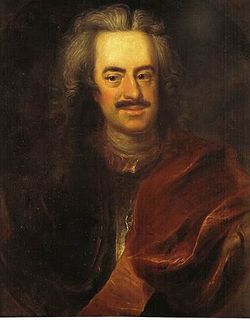 W
WLeopold I, Prince of Anhalt-Dessau was a German prince of the House of Ascania and ruler of the principality of Anhalt-Dessau from 1693 to 1747. He was also a Generalfeldmarschall in the Prussian army. Nicknamed "the Old Dessauer", he possessed good abilities as a field commander, but was mainly remembered as a talented drillmaster who modernized the Prussian infantry.
 W
WLeopold II Maximilian, Prince of Anhalt-Dessau, was a German prince of the House of Ascania and ruler of the principality of Anhalt-Dessau from 1747 to 1751; he also was a Prussian general.
 W
WHeinrich von Manteuffel, was a Prussian lieutenant general. He participated in the Pomeranian campaign of 1715 and the first two of Frederick's Silesian wars, was wounded at Chotusitz, and commanded an infantry regiment at the beginning of the Seven Years' War. He received the Order of the Black Eagle, the Order Pour le Merite and his name is inscribed on the Equestrian statue of Frederick the Great.
 W
WMaria Theresa Walburga Amalia Christina was the ruler of the Habsburg dominions from 1740 until her death in 1780, and the only woman to hold the position. She was the sovereign of Austria, Hungary, Croatia, Bohemia, Transylvania, Mantua, Milan, Lodomeria and Galicia, the Austrian Netherlands, and Parma. By marriage, she was Duchess of Lorraine, Grand Duchess of Tuscany and Holy Roman Empress.
 W
WCount Wilhelm Reinhard von Neipperg was an Austrian general.
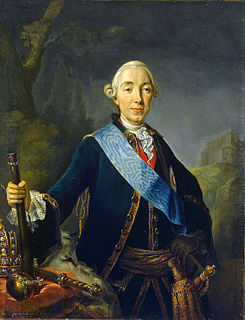 W
WPeter III was Emperor of Russia for six months in 1762. He was born in Kiel as Charles Peter Ulrich of Schleswig-Holstein-Gottorp, the only child of Charles Frederick, Duke of Holstein-Gottorp, and Anna Petrovna.
 W
WPrince Frederick Henry Louis of Prussia was a Prussian general, statesman, and diplomat. He was a son of King Frederick William I of Prussia and Princess Sophia Dorothea of Hanover, and the younger brother of Frederick the Great. Prince Henry led Prussian armies in the Silesian Wars and the Seven Years' War, having never lost a battle in the latter. In 1786, he was suggested as a candidate for a monarch for the United States.
 W
WCount Pyotr Alexandrovich Rumyantsev-Zadunaisky was one of the foremost Russian generals of the 18th century. He governed Little Russia in the name of Empress Catherine the Great from the abolition of the Cossack Hetmanate in 1764 until Catherine's death 32 years later. Monuments to his victories include the Kagul Obelisk in Tsarskoye Selo (1772), the Rumyantsev Obelisk on Vasilievsky Island (1798–1801), and a galaxy of Derzhavin's odes.
 W
WFrederick Augustus, Count Rutowsky, was a Saxon Field Marshal who commanded Saxon forces in the Siege of Pirna during the Seven Years' War.
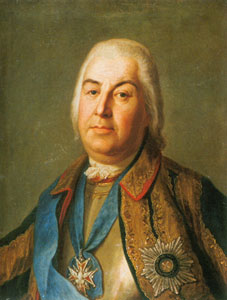 W
WCount Pyotr Semyonovich Saltykov was a Russian statesman and a military officer, promoted to the rank of Field marshal on 18 August 1759.
 W
WKurt Christoph, Graf von Schwerin was a Prussian Generalfeldmarschall, one of the leading commanders under Frederick the Great.
 W
WFriedrich Wilhelm Freiherr von Seydlitz was a Prussian officer, lieutenant general, and among the greatest of the Prussian cavalry generals. He commanded one of the first Hussar squadrons of Frederick the Great's army and is credited with the development of the Prussian cavalry to its efficient level of performance in the Seven Years' War. His cavalryman father retired and then died while Seydlitz was still young. Subsequently, he was mentored by Margrave Frederick William of Brandenburg-Schwedt. Seydlitz's superb horsemanship and his recklessness combined to make him a stand-out subaltern, and he emerged as a redoubtable Rittmeister in the War of Austrian Succession (1740–1748) during the First and Second Silesian Wars.
 W
WCharles de Rohan, duke of Rohan-Rohan, seigneur of Roberval, and marshal of France from 1758, was a military man, and a minister to the kings Louis XV and Louis XVI. The last male of his branch of the House of Rohan, he was also the great-grandfather to the duc d'Enghien, executed by Napoleon in 1804. Styled prince d'Epinoy at birth, he became the Prince of Soubise after 1749.
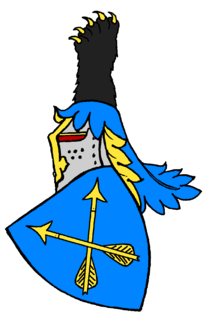 W
WSoloman Sprecher von Bernegg, born in Chur, Canton Grisons, 14 December 1697 – 14 September 1758 Aussig, Bohemia was a Habsburg military commander in the War of Austrian Succession and the Seven Years' War.
 W
WCarl Heinrich von Wedel was a Prussian lieutenant general in the War of Austrian Succession (1740–1748), the Seven Years' War (1756–1763), and the War of Bavarian Succession (1778–1779). He fought most notably in the Battle of Tornow in 1758, and the Battle of Kay in 1759. He was instrumental in Frederick the Great's victory at Leuthen in December 1757.
 W
WHans Karl von Winterfeldt, a Prussian general, served in the War of the Polish Succession, the War of Austrian Succession, Frederick the Great's Silesian wars and the Seven Years' War. One of Frederick's trusted confidantes and advisors, he attracted enmity from other courtiers. Frederick entrusted him with considerable autonomy on the general staff, and Winterfeldt developed the first "modern" program of military intelligence gathering. He negotiated the Convention of Westminster and, for his efforts on Frederick's behalf, received the Order of the Black Eagle and the Order Pour le Mérite. He died from wounds received at Battle of Moys. His name is included on the Equestrian statue of Frederick the Great.
 W
WJohann Jakob von Wunsch (1717–1788) was soldier of fortune and Prussian general of infantry, and a particularly adept commander of light infantry. The son of a Württemberg furrier, he served in several armies in the course of his lengthy career.
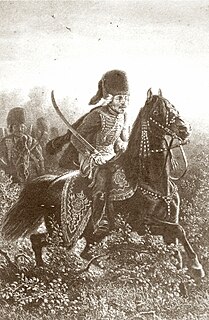 W
WHans Joachim von Zieten, sometimes spelled Johann Joachim von Ziethen,, also known as Zieten aus dem Busch, was a cavalry general in the Prussian Army. He served in four wars and was instrumental in several victories during the reign of Frederick the Great, most particularly at Hohenfriedberg and Torgau. He is also well known for a raid into the Holy Roman Empire during the Second Silesian War, known as Zieten's Ride. After engaging in a reputed 74 duels, and fighting in four wars, he died in his bed at the age of 86.